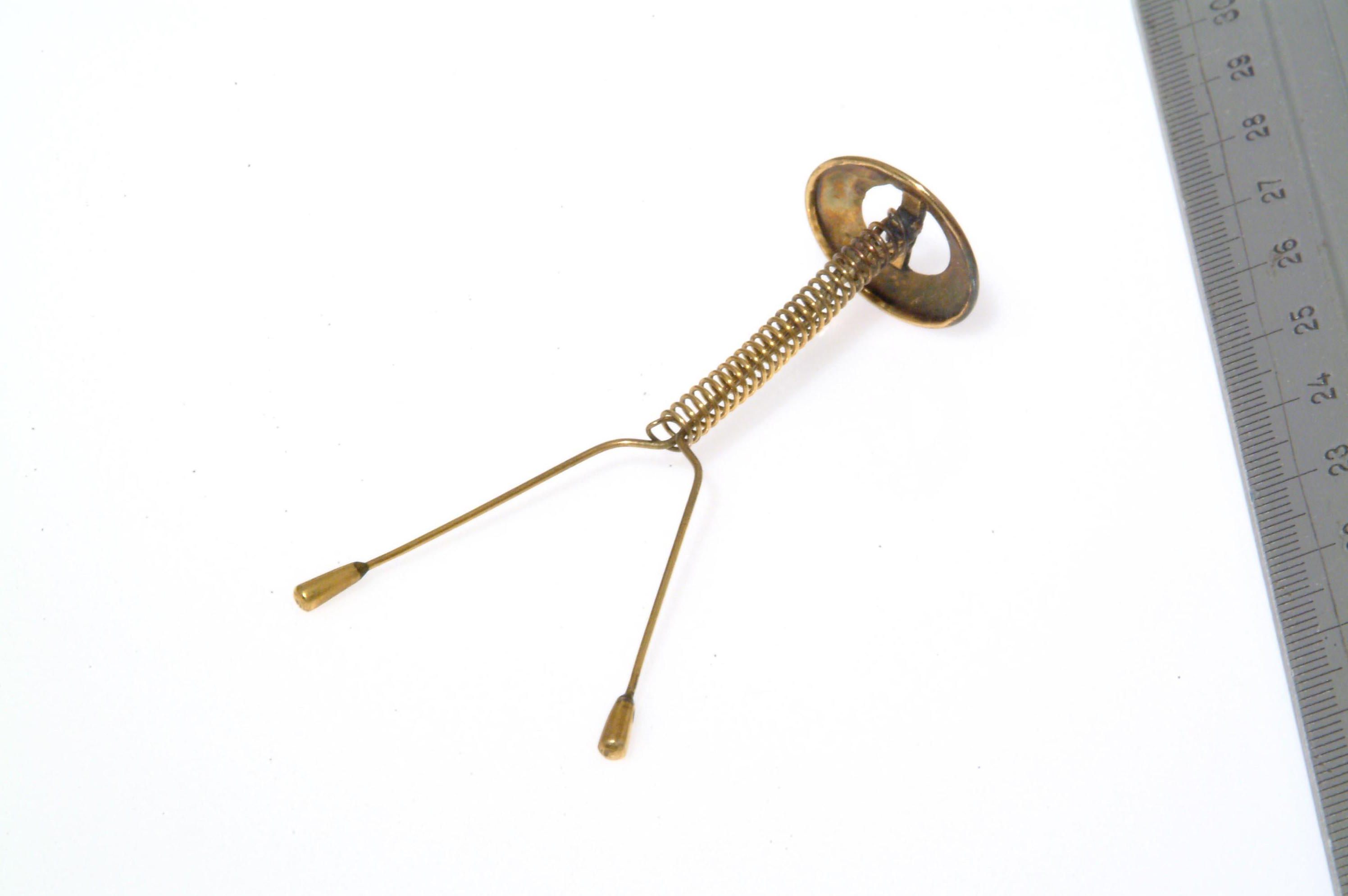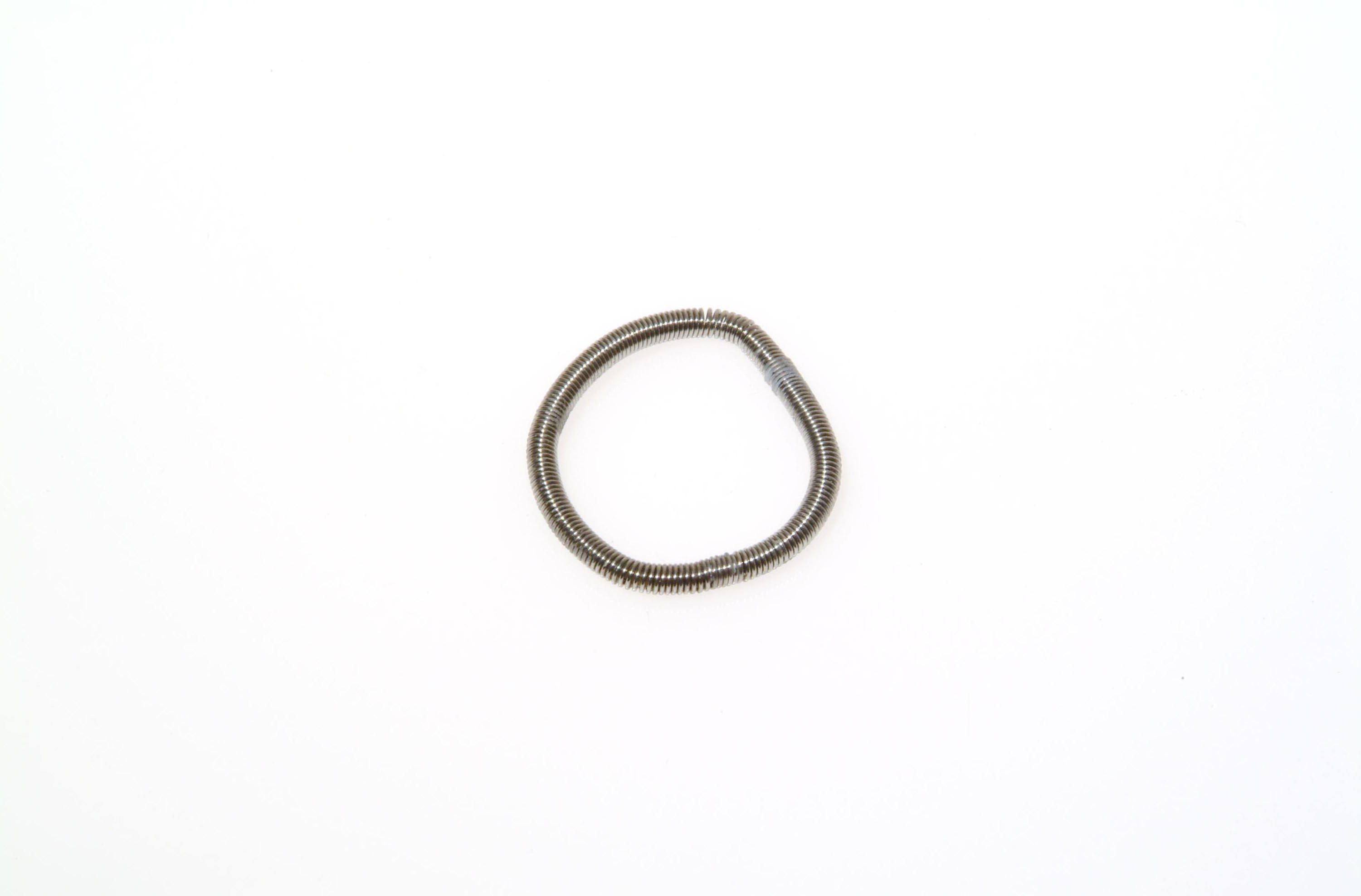The Twisted History of IUD Design
Before doctors settled on the T-shape, these contraceptives came in all shapes and sizes.

In the United States today, when a doctor installs an intrauterine device, that contraceptive IUD is mostly likely to come in the simple shape of a “T.” In the long history of inserting foreign objects into uteruses to prevent pregnancy, though, this is a recent development.
“If you look at any collection of IUDs, you look at these forms and think, ‘Oh gosh,’” says Christian Fiala, the founder of Vienna’s Museum for Contraception and Abortion. The IUDs of the past swirled and looped into strange shapes; some were edged with comb-like teeth. “You don’t see any strategy behind the different forms or concepts,” says Fiala. “You really had the idea that it was more trial and error.”


There are reports going back centuries of the introduction of stones and other objects in the uteruses of camels, cows, and women to prevent pregnancy, but the modern history of the IUD begins in the early 20th century. At the time, devices inserted into the vagina to block sperm from reaching the uterus, called pessaries, were one of the more popular methods of birth control. In one of the more aggressive forms, the “stem pessary,” part of the device would be inserted into the cervix.
In the 1920s, though, the gynecologist Ernst Gräfenberg (perhaps best known as the namesake of the “G-spot”) developed a device that was placed all the way into the uterus itself. The original “Gräfenberg’s ring” was made of silk. He also experimented with silver, and a later version of the ring was made of stainless steel. “He was extremely courageous to do that work,” says Fiala. “There was no ultrasound, and most of his colleagues were very skeptical. Contraception was illegal at the time. And it worked, somehow.”

It wasn’t until the 1960s, though, that experiments in the design of IUDs really began. One of the most widely prescribed IUDs of the time was the Lippes Loop, which curves like a snake into a triangular, double-S shape, and was meant to fill the cavity of a uterus. The Margulies Spiral looked like a fiddlehead fern, with a long plastic stem and curled top. There was also the hourglass-shaped Birnberg Bow, and the ram’s head–like double coil. The infamous Dalkon Shield, which had a design flaw that rendered some of its users sterile, looks like a fringed stingray. “When plastic suddenly became available and moldable, and then you can really see an explosion of ideas of different forms that were tried at that time,” says Fiala.
As far as doctors understood, these plastic objects prevented pregnancy by keeping fertilized eggs from implanting in the uterus. Given that mechanism, they believed that covering more surface of the uterine cavity, or “filling up” the uterus with the device, was an important feature of an IUD. Chikako Takeshita, in The Global Biopolitics of the IUD, explains that many of the plastic models of the 1960s were larger than the size of an average uterus, which prompted doctors to consider, as one put it, “the interesting question of whether there is an optimum ratio between a device’s size and the variable uterine area.”

“These IUDs were mainly invented by individual gynecologists and tested in their offices, and sometimes a lot of people used it. Other times, it just disappeared,” says Takeshita. “There was no patient bill of rights or anything like that, and often doctors did whatever they wanted.”
The devices were by no means perfect. Doctors experimented with form in part to decrease the rate at which uteruses expelled the devices. And it was still possible to get pregnant while using an IUD. Ectopic pregnancy, usually in a Fallopian tube, was a serious concern.
Some of the most avid boosters of the device, Takeshita writes, were associated with the Population Council and saw IUDs as a way to defuse the coming “population bomb” by controlling fertility. But for many people the devices simply provided unprecedented control over reproductive life. “This is a striking feature when you look at the history of fertility control—to what extent people were desperate, just plain desperate,” to escape the exhausting cycle of pregnancy and birth, says Fiala.

IUDs became much more reliable when spermicidal copper was added to their design in the 1970s. They also began to take on the simple T-shape most often used today. Manufacturers later created hormonal IUDs, which eliminate some of the side effects associated with copper-containing IUDs while maintaining their effectiveness. “Hormonal IUDs have the highest satisfaction rates compared to all contraception, and women are really free—for the first time in history, women can focus on what matters most to them,” says Fiala. “To me, IUDs are the most promising approach for contraception.”
Learn more about the history of contraception with a special access tour of the Museum for Contraception and Abortion in Vienna on Obscura Day, May 6, 2017.


















Follow us on Twitter to get the latest on the world's hidden wonders.
Like us on Facebook to get the latest on the world's hidden wonders.
Follow us on Twitter Like us on Facebook